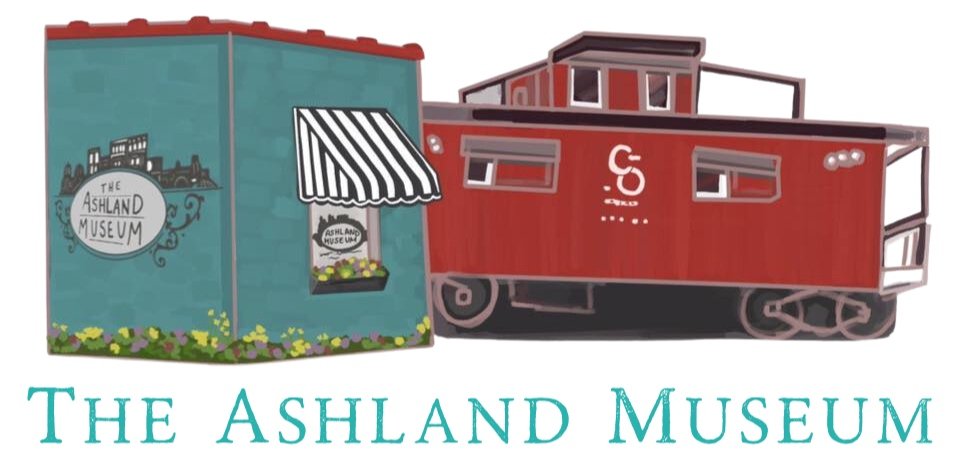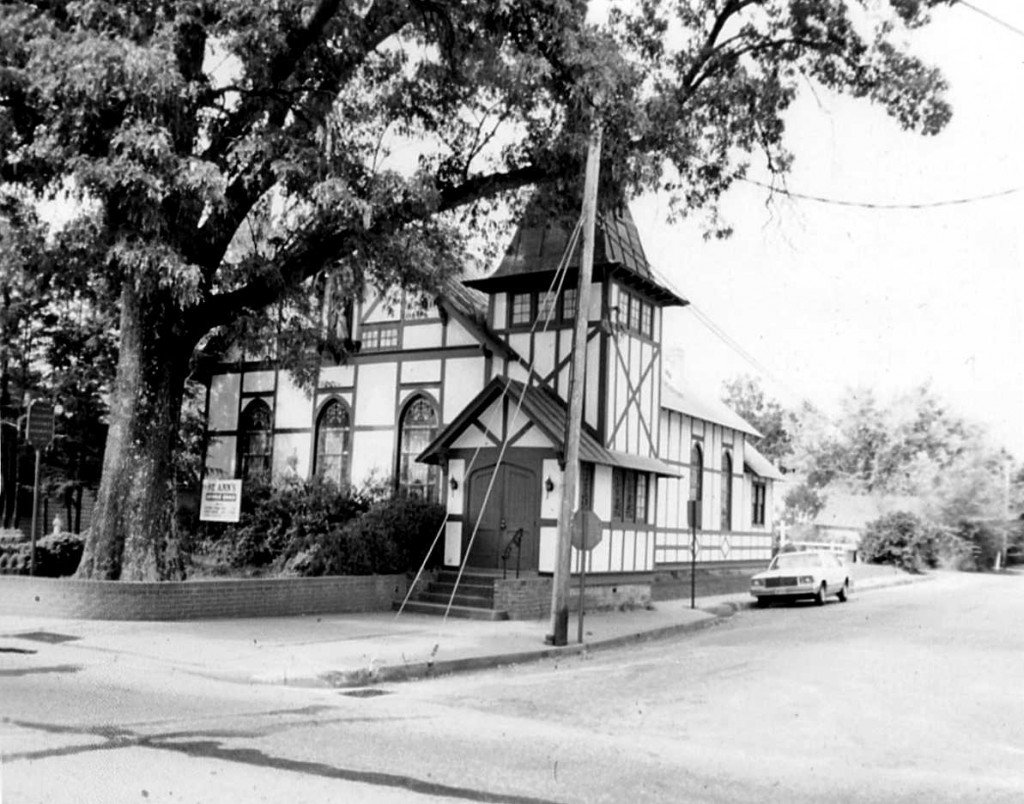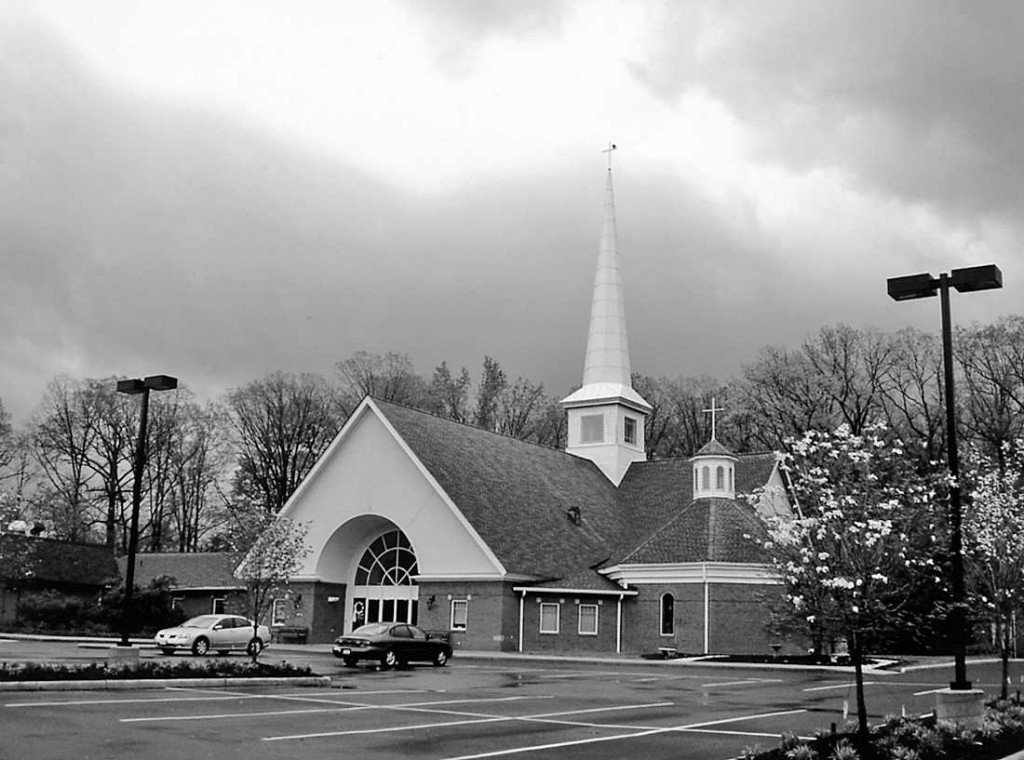St. Ann’s Catholic Church
In 1872 the Catholic Bishop James Gibbons of Richmond purchased a former schoolhouse at 705 S. Railroad Avenue, naming it St. Augustine’s Chapel. Before that, Ashland Catholics usually took the Accommodation Train to Richmond for mass at St. Peter’s. Occasionally a visiting priest would celebrate mass for them in the homes of Henry and Caroline Scott, or Louis and Adele Delarue, or others.
Built on a tiny lot on England Street as St. Ann's Catholic Church in 1892, this building served the growing Roman Catholic population of Ashland for 89 years. This building, now deconsecrated, has become part of the Randolph-Macon College campus. It serves as a rehearsal space and recital hall for the R-MC Music Department.
In 1892 a new church was built at the corner of Henry and England Streets with the patronage of Captain and Mrs. Andrew Pizzini and named St. Ann in honor of Mrs. Ann Pizzini’s patron saint. St. Ann is the mother of the Virgin Mary. The Bishop donated the Gothic-style altar, built at the Josephinium Orphanage in Columbus, Ohio. Still, mass was celebrated only monthly by a visiting priest.
In 1919, Fr. Walter J. Nott was assigned to St. Ann’s. Fr. Nott, with the help of architect L.P. Hartsook, led the church in a major remodeling of St. Ann, transforming it from a simple clapboard country church to Tudor-style and the addition of a bell tower vestibule, choir balcony, and sacristy. The Hartsooks donated the gothic stained glass windows. Fr. Nott was still commuting from Richmond where he had other diocesan duties. Alas, an overworked Fr. Nott had to relinquish his post at Ashland in 1927 and soon died of consumption.
Fathers John Fayhe and Francis Byrne, who followed Fr. Nott, were also assigned two additional missions to St. Ann’s parish: St. Mary’s at Woodford and Sts. Cyril and Methodius at Welches, both in Caroline County. It was apparent that the diocese needed assistance in administering the three churches, so the diocese contracted with the Oblates of Mary Immaculate, a mission order of priests from Massachusetts, to staff St. Ann. Establishing a parsonage at 307 College Avenue, OMI priests served the parish for 45 years, from 1937 to 1981. During their tenure here, the parish grew. Under Fr. Joseph Curtin, the parish bought a school bus for transporting Catholic children to the Catholic school at St. Joseph’s Villa in Richmond during the school year and outings to the South Anna River in the summer.
During this time, the parish raised funds for a new parish hall on Snead Street by selling spaghetti suppers and by staffing the St. Ann’s food tent at the State Fair in Richmond every year. Finally, the Curtain Center was constructed on Snead Street in 1975. For years, the parish conducted bingo games to pay the remaining cost of the Center and to save for a new church building.
In 1981, the Oblates turned the parish over to the Richmond Diocese who moved the diocesan priests into a new rectory on Thompson Street. The parish was outgrowing the small church on England Street. Randolph-Macon College purchased the old church building from the parish. The R-MC Music Department now uses the deconsecrated church as a rehearsal space and an recital hall. The Curtain Center was converted to a temporary worship space until the parish could raise enough funds to build a new church. For many years, Thursday nights were given to bingo, and Saturday and Sunday nights to worship. It was an imperfect arrangement.
In 1996, the diocese assigned to St. Ann Fr. William Sullivan, a priest with a reputation for helping congregations build and renovate churches. In 2000, under his leadership and that of a number of hardworking parishioners and numerous committees, the parish proudly laid the cornerstone for the new St. Ann’s church building, designed by architect Robert Winthrop. Wishing to retain a tie to its past, the parish decided to place the 1892 altar in the small chapel that is part of the new church.
In 2008, St. Ann’s parish numbered 650 families. Fr. Christian Haydinger, pastor of both St. Ann and St. Mary in Caroline County, has quite a workload, but permanent deacon Rev. Mr. Eugene (Chuck) Kamper assists him. St. Ann also works with a twin parish in Dubisson, Haiti, to fund their church and school. Along with other Ashland churches, St. Ann assists in the work of Ashland Christian Emergency Services, Prison Ministry, and Caritas for the homeless. No longer a bingo hall, the old parish hall serves as the Sunday School building. St. Ann is still growing and will soon require more room. Fortunately, the new worship space was especially designed for expansion. We look forward to the challenges of the future with the same energy that we faced those of the past.
From: Ashland, Virginia 150 Years: 1858 – 2008, p. 32-33. Article submitted by Rosanne Groat Shalf.


